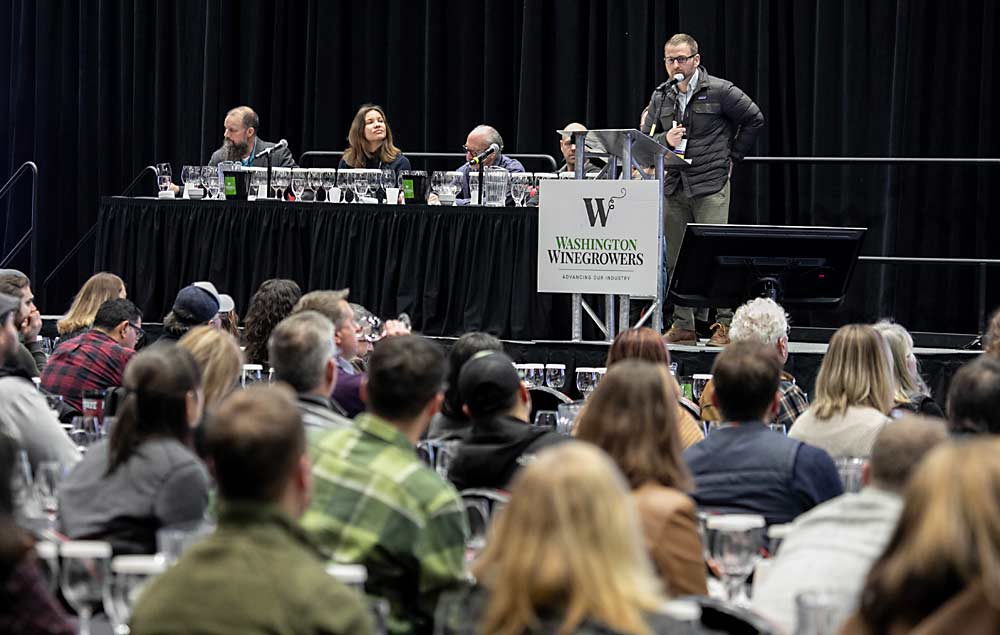
The Washington wine industry gathers in Kennewick this week for WineVit, the annual convention and trade show hosted by the Washington Winegrowers Association. This year, the event kicked off with a trip to Spain on Feb. 7.
Well, winemaker Javier Alfonso took his audience on a tour of the growing regions in his native Spain, known for their Tempranillo.
“Tempranillo is THE grape of Spain,” said Alfonso, owner of the Woodinville-based Pomum Cellars.
The cultivar is primarily grown in the high-altitude plateau in the center of the country that “looks a lot like Eastern Washington,” Alfonso said.
The discussion and tasting that followed compared Tempranillo wines from Spain with those from Washington’s Yakima Valley and Oregon’s Umpqua Valley, where the Abacela Winery focuses on Tempranillo.
Gavin Joll, the general manager of Abacela in Roseburg, Oregon, told the story of how the winery was founded by Earl and Hilda Jones, two scientists who loved Tempranillo and wanted to establish their own vineyard and winery to grow it in the U.S.
“They wanted a cool spring and a moderately hot, dry summer. They wanted a truncated fall with low frost risk, low winter freeze risks,” Joll said. “They quickly realized that southern Oregon checked all the boxes.”
Through trial and error since first planting in 1995, the Abacela team learned a lot about how best to grow the Spanish cultivar on a new continent.
Yakima Valley grower Todd Newhouse also spoke about learning to grow Tempranillo, which is named for the Spanish word for early. At his location on Snipes Mountain, it’s always the first to reach veraison, despite bloom timing similar to many other cultivars.
It’s vigorous and water sensitive, he said.
“You can’t deficit irrigate like you can other varieties,” Newhouse said. “If you wait, you are going to end up with no leaves on the west side and sunburned fruit.”
Following the tasting session, student-scientists shared research posters and presentations of industry relevant research on smoke mitigation in the winery, nutrient optimization and mealybug management, among other topics.
The conference and trade show continues on Wednesday and Thursday. For more information, visit: winevit.org.
—by Kate Prengaman






Leave A Comment